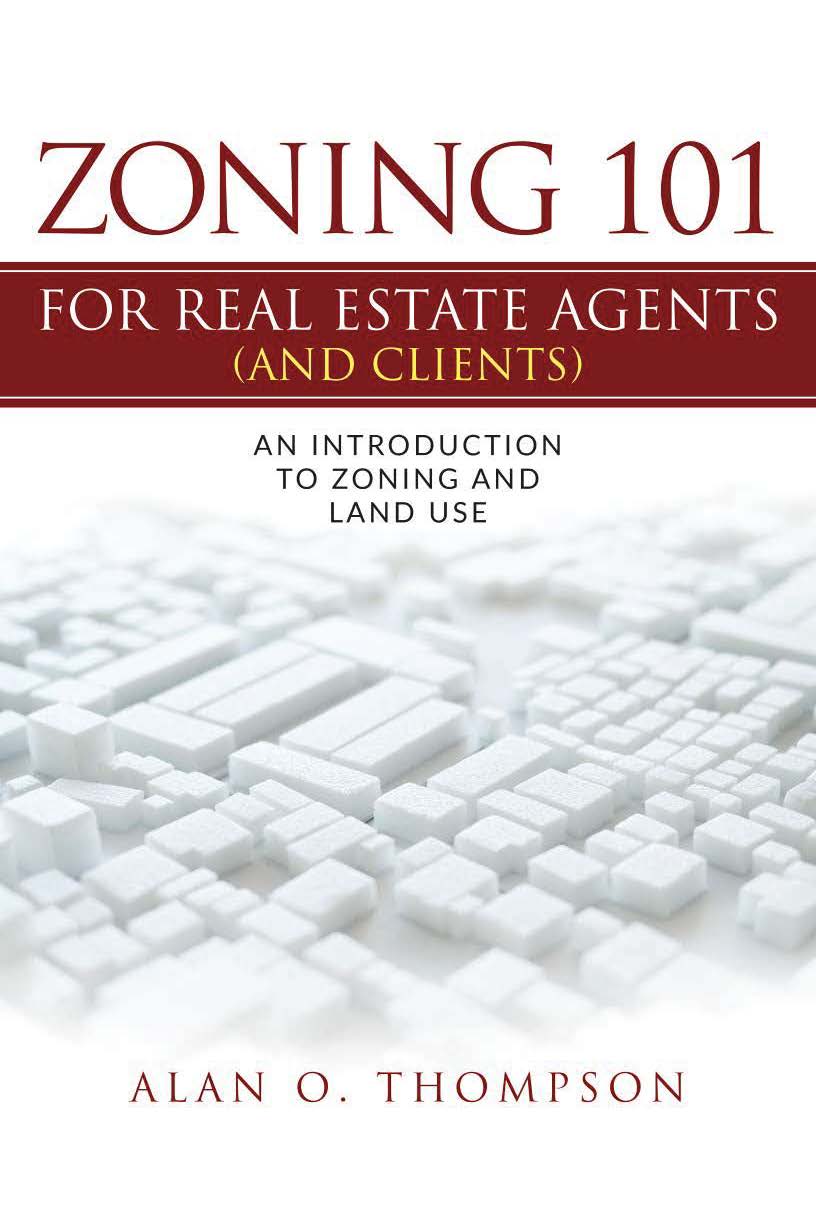By Alan O. Thompson
Zoning 101 for Real Estate Agents
(And Clients)
An Introduction to Zoning and Land Use
This book is designed for Real Estate Agents, their Clients, and anyone generally interested in the basics of zoning and land use. This is intended to be an introduction and is not an advanced comprehensive manual. There are plenty of other sources of advanced land planning information available.
Author
Alan O. Thompson
An experienced land planning professional with demonstrated success in planning, developing, managing and obtaining agency approvals for land development projects. County Planning Director before doing private sector land planning, engineering and project management. Extensive computer experience including the owner of SmartMAP.com and formerly ThompsonMapping.com having created numerous SmartMAP Internet mapping sites for State, County and Municipal agencies including data such as parcels, aerials, wetlands, zoning, soils, and more for computerized land planning and site analyses. Created the first GIS Assessment Parcel Map for 2 of the 3 Delaware counties’ property maps. The primary contractor developing and implementing for the No. 1 Agricultural Preservation in the USA for 23 years. Licensed Real Estate Broker in Charge (BIC) in North Carolina.
Sample: Chapter 11
It is important for a Real Estate Agent to understand the difference between Zoning Regulations, Deed Restrictions and Homeowners Association (HOA) Covenants and Restrictions. Generally, the strictest applies. For example, if the HOA allows a shed to be located within 5’ of the lot line, but the Zoning requirement is 10’, the Zoning requirement applies. Conversely, the opposite is true.
– Zoning 101, Page 82
Zoning is based on a publicly adopted Land Use Plan, often called the Future Land Use Plan or Comprehensive Plan. This plan lays out the way the community wants to grow.
So, if zoning is based on a plan, zoning then is the tool to implement that plan. To rezone a property, it must be in accordance with the adopted plan. If not, then the plan should be modified to match a desired zoning change.
– Zoning 101, Page 9
A Real Estate agent lost his license because he assured the buyers that they could construct an 8‐ foot fence after buying. The HOA restrictions, however, limited fence height to 6’.
It is important for a Real Estate Agent to know exactly what restrictions affect a property. HOA documents are readily available and a look at the deed will quickly show Deed Restrictions for the property.


